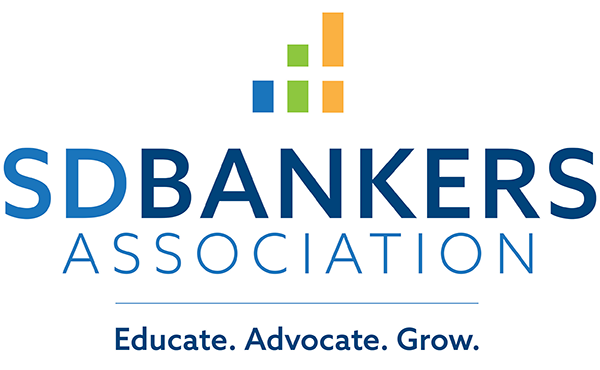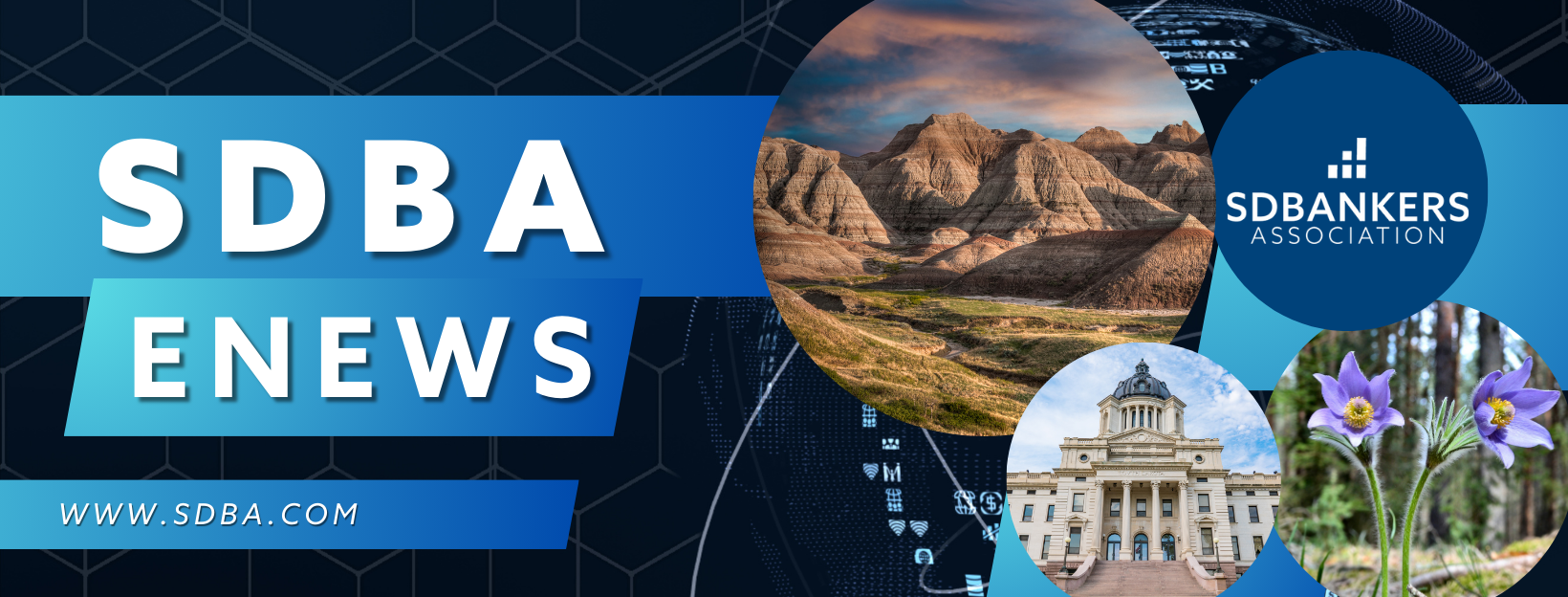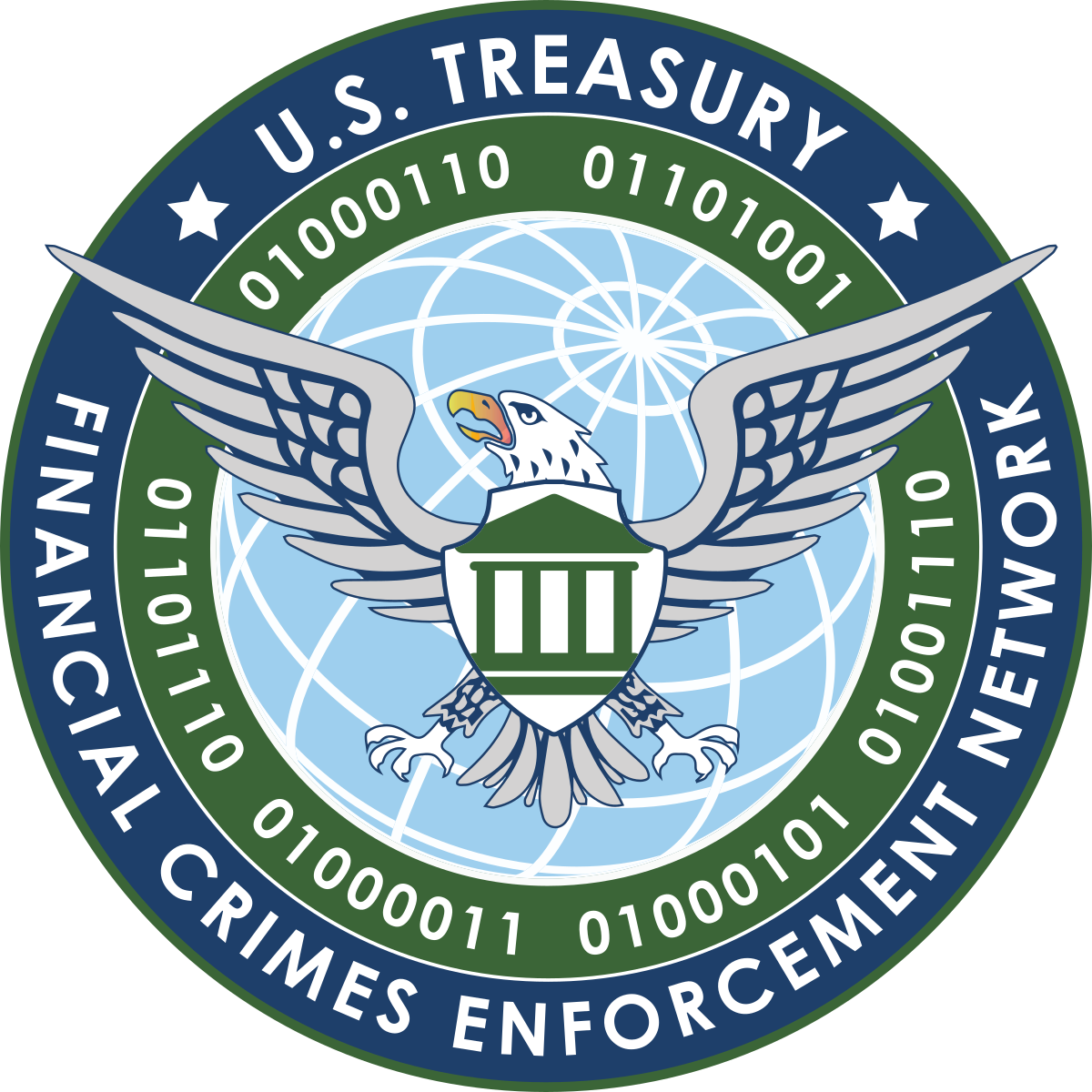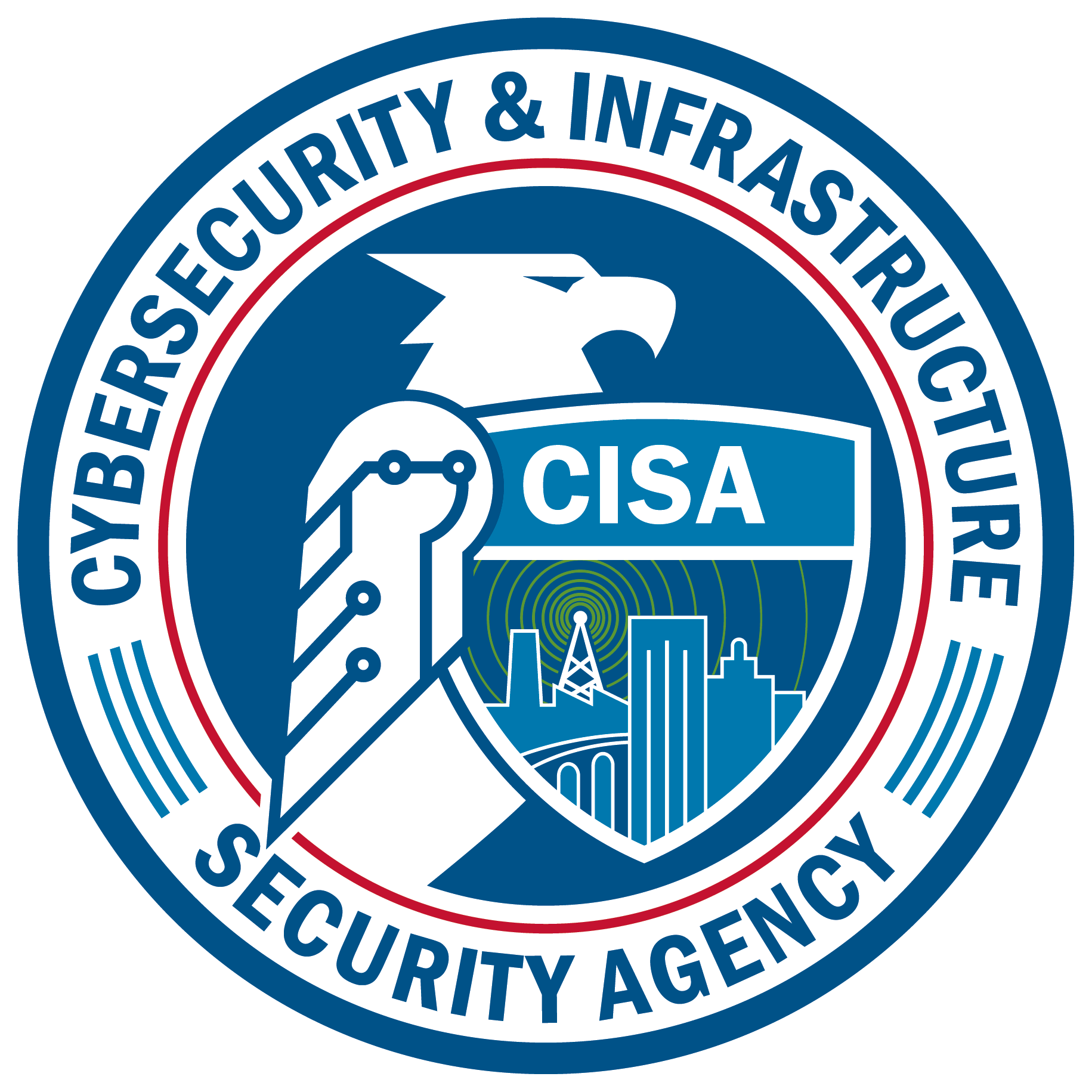- Education & Events
- Advocacy
- Products & Services
- Membership
- Resources
- SDBANKER Magazine
- SDBA eNews
- SDBA eNews Archives
- Legislative Update/Bill Watch
- South Dakota Bank Directory
- Women in Banking
- Scenes of South Dakota Calendar*
- Holiday Signs
- Regulatory Report
- South Dakota Banking Code
- Record Retention Manual
- Advertising & Sponsorship Guide
- COVID-19 Resources
- Mental Health and Crisis Prevention
- About
|
ABA Newsbytes: ABA Reiterates Concerns About Executive Compensation ProposalABA has again commented on the reintroduction of a 2016 proposed rule to create new limits on incentive compensation at certain financial institutions. In a letter sent Monday to the FDIC, OCC, National Credit Union Administration, and Federal Housing Finance Agency, ABA reiterated its concerns that the proposal does not reflect any of the issues raised by the industry when the proposal was first introduced eight years ago, nor does it have legal standing without the participation of all the required federal agencies. Section 956 of the Dodd-Frank Act call for six agencies—the Federal Reserve, FDIC, OCC, National Credit Union Administration, Securities and Exchange Commission and Federal Housing Finance Agency—to issue regulations or guidelines to prohibit incentive-based compensation arrangements that encourage excessive risk-taking at financial institutions with at least $1 billion in assets. A 2016 proposal was reintroduced earlier this year by four of the agencies, but not the SEC or Fed. ABA noted the lack of participation of the SEC and Fed as well as the decision by the remaining agencies to request comment through press release rather than publication in the Federal Register, as required by the Administrative Procedure Act. ABA also noted that the proposal is just a copy of the 2016 rulemaking that was never finalized, incorporating none of the recommendations and concerns raised by the industry when that proposal went through the public review process. Read the letter. For more information, contact ABA’s Hu Benton . ABA Banking Journal: FinCEN Proposes New Requirements for Financial Institution AML/CFT ProgramsJune 28, 2024 The Financial Crimes Enforcement Network today proposed a new rule to require financial institutions to establish and maintain “effective, risk-based and reasonably designed” anti-money laundering/countering the financing of terrorism programs with certain minimum components, including a mandatory risk assessment process. The proposed rule also would require financial institutions to review government-wide AML/CFT priorities and incorporate them “as appropriate” into risk-based programs, and would make other changes to program requirements, a pillar of banks’ Bank Security Act/AML/CFT compliance. Earlier in the week, the Federal Reserve, Office of the Comptroller of the Currency, FDIC and National Credit Union Administration previewed a separate proposed rule that would align each agency’s Bank Secrecy Act compliance program requirements with FinCEN’s proposed changes, which are being made to implement provisions of the Anti-Money Laundering Act of 2020. Among other things, FinCEN said the proposed rule seeks to avoid “one-size-fits-all approaches to customer risk that can lead to financial institutions declining to provide financial services to entire categories of customers.” “More than ever, financial institutions are partnering with government to address a range of serious law enforcement and national security issues with illicit financing implications, from fentanyl trafficking to Russia’s illegal invasion of Ukraine,” Deputy Secretary of the Treasury Wally Adeyemo said in a statement. “It has been an important priority for Treasury to issue this proposed rule that promotes a more effective and risk-based regulatory and supervisory regime that directs financial institutions to focus their AML/CFT programs on the highest priority threats.” CISA NEWS: Looking Ahead to Better Prepare TodayCISA Releases the Latest Update to the Secure Tomorrow Series ToolkitBy Erin Walsh, Associate Director of Strategic Foresight | July 1, 2024
Critical infrastructure owners and operators have a lot on their plate. Social, technological, economic, environmental, and political changes contribute to new and evolving risks at seemingly faster rates. Meanwhile, critical infrastructure owners and operators and their partners have operational, business, and other demands that compete with their time and ability to reflect on future resilience and security needs. With multiple risk factors and demands on everyone’s time, asking the right questions is critical to gaining better insights. While everyone wants to be ready for whatever’s coming on the horizon, having discussions around an uncertain future can feel daunting, and an unfocused approach can result in vague and nonactionable strategies that can leave organizations and their people less safe and less resilient. The Secure Tomorrow Series Toolkit is meant to help fill this gap by structuring and facilitating these discussions. Each year, CISA selects three topics with significant potential to disrupt multiple National Critical Functions and delves into how these topics might result in emerging and evolving risks that affect critical infrastructure resilience and security. CISA uses this knowledge base to build a toolkit of strategic foresight activities. The idea is to package proven methods, high quality prompts, and extensive supporting materials together, so that critical infrastructure partners can confidently bring together participants with domain-, regional-, and sector-specific expertise and productively arrive at risk mitigation strategies that are relevant and actionable. Secure Tomorrow Series Toolkit products help distill and distinguish real concerns arising from each topic, which participants then ground in the realities of their situations. Today’s update introduces three new topics:
These topics add to the existing toolkit library that covers brain-computer interfaces, synthetic biology, quantum technologies, anonymity and privacy, trust and social cohesion, and data storage and transmission. Each toolkit activity is carefully designed to allow whoever is sponsoring an activity to engage with their critical infrastructure community in fun, challenging, and productive ways. From matrix games that can be played in a single morning or afternoon session, to one-day scenarios workshops that integrate multiple topics to highlight systems and emergent risks, the toolkit has activities targeted to different levels of participation and time commitment. The hope is that these activities lead to better insights on risk mitigation that participants can bring back to their organizations, while strengthening networks to engage in further planning and implementation. Download/share the Secure Tomorrow Series Toolkit. To learn more, visit the Secure Tomorrow Series webpage. ABA, Associations: Proposed Cyber Reporting Rule Misses the MarkJune 28, 2024
A proposed rule requiring financial institutions and other “critical infrastructure” businesses to report cyber incidents and ransomware payments to the Cybersecurity and Infrastructure Security Agency “departs significantly” from what Congress intended when it passed the reporting law, ABA and three other associations said Friday.
Read the joint association letter Read a joint statement by the associations 2025 Scenes of South Dakota Photo Contest
Submit your photos TODAY!The South Dakota Bankers Association is creating a customized calendar from photographs of South Dakota submitted by South Dakota bankers, their family members and customers. These calendars are exclusive to SDBA member banks and make a great gift for your customers!
If you are an amateur photographer and would like the opportunity to have your creativity displayed in homes and businesses across South Dakota, this is your chance! Send us your photos of farms, barns, agricultural activities, historical South Dakota locations, county fairs, carnivals, parades or festivals, fall colors, winter snowfalls, spring flowers, or summer fun. Any photo that shows the history and beauty of the great state of South Dakota qualifies.
All photos submitted will be judged and the top photos will be featured throughout the 2025 Scenes of South Dakota calendar. Entry Deadline: July 31, 2024 2024 SDBA IRA School | September 17-19, 2024Ramkota Hotel, Sioux FallsRegistration is OPEN for the 2024 IRA School in Sioux Falls on September 17-19, at the Ramkota Hotel. IRAs are one of the most complicated areas of bank personnel responsibility. Working with them is a process and must begin with a strong foundation. This IRA school can provide such a foundation through an extensive curriculum, covering both new and current IRA material, along with previous topics covered at the school that will be expanded on. This program is the quickest, easiest, and most comprehensive coverage of IRAs and HSAs. Hotel block will release on August 19, 2024. 2024 Women of Impact Award - Nominate by August 2
The SDBA Women of Impact Award has been established to celebrate South Dakota Bankers Association members who have made significant contributions and positive impacts in their organizations, communities and industry. These awards will be presented at the 2024 Lead Strong: Women in Banking event on September 26 in Sioux Falls, SD. Question of the WeekQ: Is collecting the "purpose" of a wire from the customer a regulatory or legal requirement or just a best practice? A: From the BSA regulatory perspective, the "purpose" of a wire is not required; when the $3,000 threshold is met in a fund transmittal, the "travel rule" applies, but even then, FinCEN does not discuss "purpose" as a required element, which would suggest it is more of a best practice (31 CFR 1010.410(f)(1)). Generally speaking, requiring the purpose of a wire may be part of the bank's risk-based anti-money laundering policies and procedures, so ultimately, whether the bank maintains a requirement to know the purpose of the wire will be determinate on the bank's internal BSA and CDD policies and procedures. Learn how to put compliance management solutions from Compliance Alliance to work for your bank, by contacting (888) 353-3933 or [email protected] and ask for our Membership Team. For timely compliance updates, subscribe to Bankers Alliance’s email newsletters.
SDBA eNews Archive Advertising Opportunity Questions/Comments |








